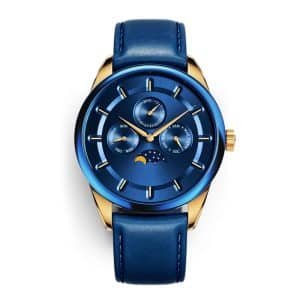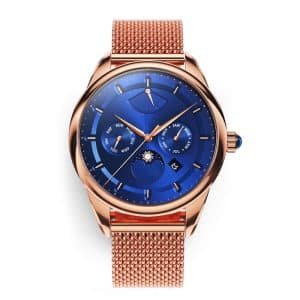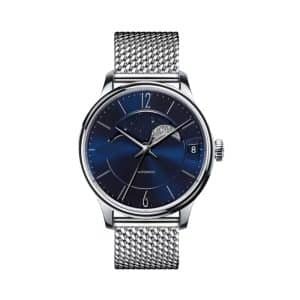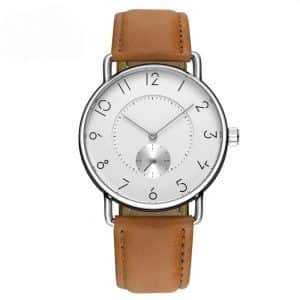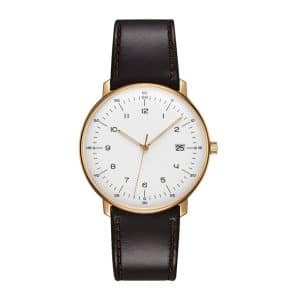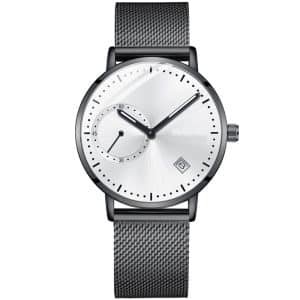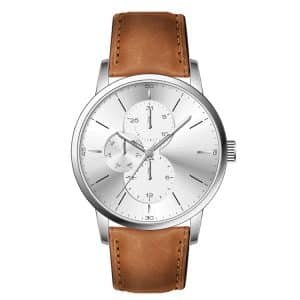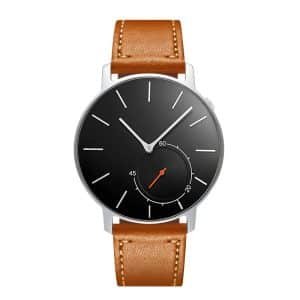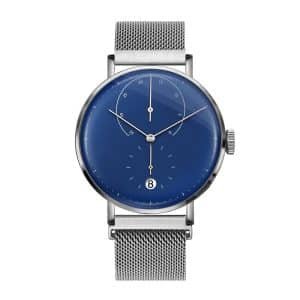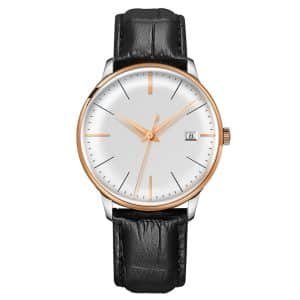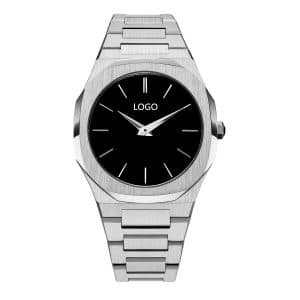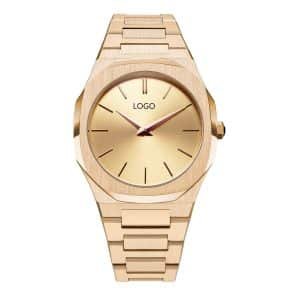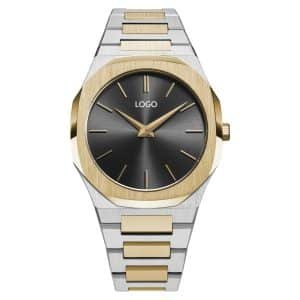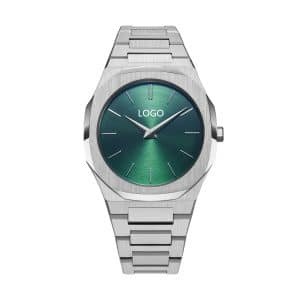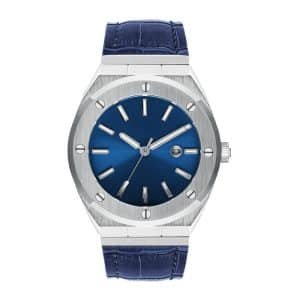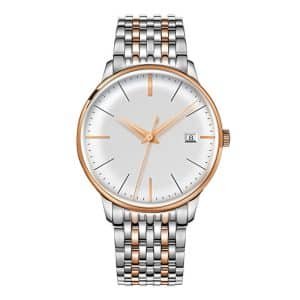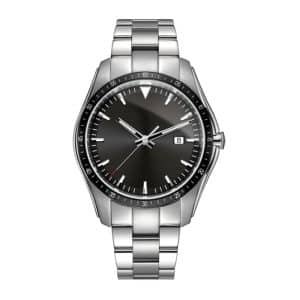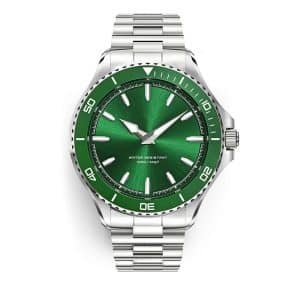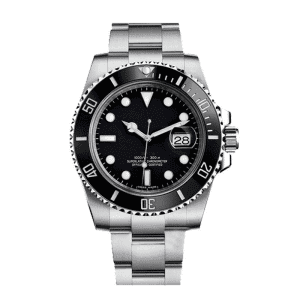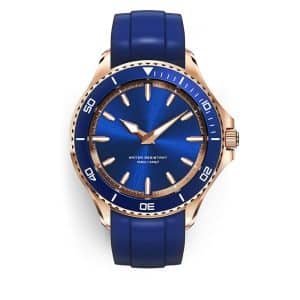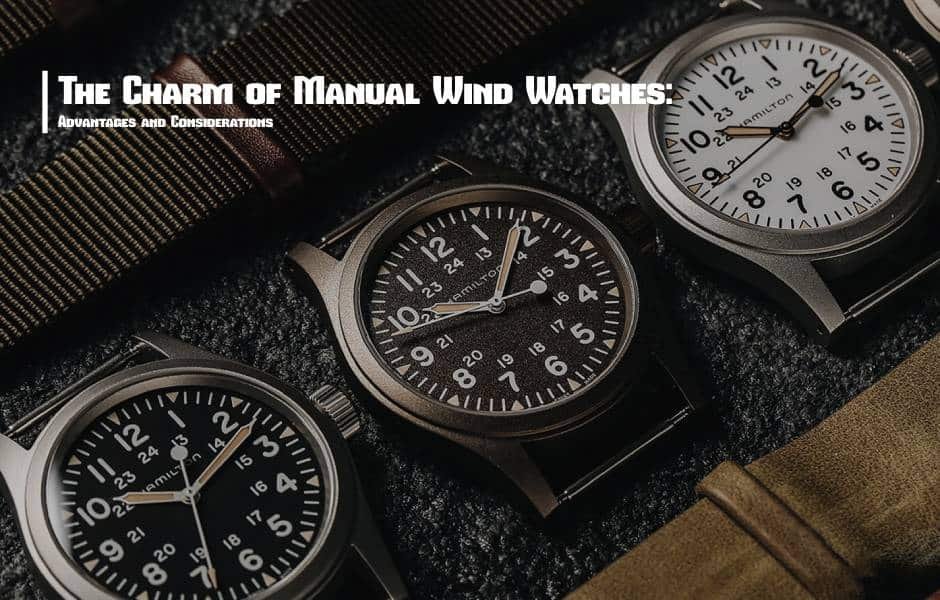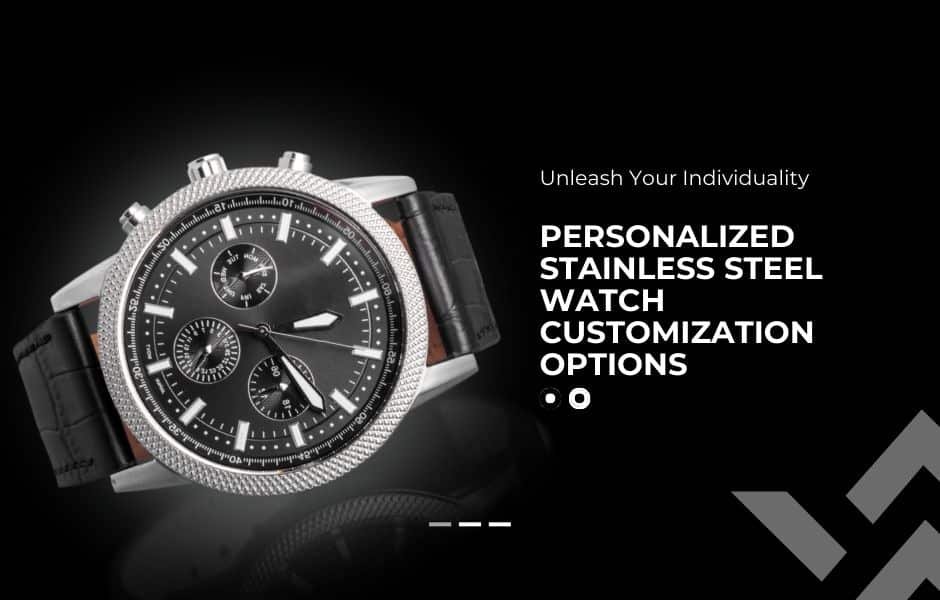When it comes to watches, the material used in their construction is a crucial factor that can significantly impact their overall look, feel, and durability. With a wide array of materials available, from precious metals to modern alloys, choosing the right one can be a daunting task. In this comprehensive guide, we’ll explore the advantages and drawbacks of various watch materials, helping you make an informed decision that aligns with your preferences and lifestyle.
Watches are more than just timekeeping devices; they are pieces of art, craftsmanship, and personal expression. The material you choose can reflect your style, convey a sense of luxury or ruggedness, and ultimately determine the longevity of your timepiece. Factors such as durability, weight, potential allergies, and aesthetics all play a role in selecting the perfect material for your next watch.
Whether you’re a seasoned watch enthusiast or a newcomer to the world of horology, understanding the nuances of different materials will empower you to make a choice that resonates with your values and meets your expectations. So, let’s dive into the fascinating realm of watch materials and uncover the secrets that lie within each one.
Precious Metals
When it comes to luxury and prestige, nothing quite matches the allure of precious metals in watchmaking. These materials have been coveted for centuries, symbolizing wealth, elegance, and timeless style. Among the most sought-after precious metals for watches are gold and platinum.
Gold
Gold has long been a favorite among watchmakers, with its warm, lustrous hue and malleable nature allowing for intricate designs and detailed craftsmanship. The most commonly used varieties in watchmaking are 18K yellow gold, 18K white gold, and 18K rose gold.
- 18K Yellow Gold: This classic choice exudes a rich, golden warmth that never goes out of style. Its soft, buttery tones complement a wide range of styles, from dress watches to sports timepieces.
- 18K White Gold: Achieved by alloying gold with nickel, palladium, or other white metals, 18K white gold offers a cool, sophisticated look perfect for those seeking a more contemporary aesthetic.
- 18K Rose Gold: With a romantic, reddish-pink hue, rose gold is rapidly gaining popularity among watch enthusiasts. Its unique color is achieved by alloying gold with copper, creating a warm and inviting tone.
While precious, gold is relatively soft, making it more susceptible to scratches and dings over time. However, its malleability also allows for intricate designs and detailed engravings, adding to the allure of gold watches.
Platinum
At the pinnacle of precious metals lies platinum, a rare and dense material that exudes an aura of exclusivity. Prized for its strength, durability, and hypoallergenic properties, platinum watches are the epitome of luxury.
Platinum’s high density gives watches a substantial feel and presence on the wrist, while its resistance to tarnishing and corrosion ensures lasting beauty. However, this exceptional quality comes at a premium price, making platinum watches a true investment piece.
While precious metals offer unparalleled elegance and prestige, their softness and potential for scratches should be considered. Proper care and maintenance are essential to preserve the beauty of these timepieces for generations to come.

Base Metals
While precious metals have long been revered in watchmaking, base metals have also carved out a significant place in the industry, offering affordability and durability without compromising style. Among the most popular base metals used in watches are copper and stainless steel.
Copper
In recent years, copper has emerged as a trendy and unique choice for watch cases and bracelets. This warm, reddish-brown metal has a distinctive vintage charm that appeals to many watch enthusiasts. One of the main draws of copper watches is the natural patina that develops over time, creating a one-of-a-kind aged look.
However, it’s important to note that copper is a relatively soft metal and can be susceptible to scratches and dents. Additionally, some individuals may experience skin irritation or allergic reactions when wearing copper watches due to the metal’s reactive nature.
Stainless Steel
Stainless steel is undoubtedly one of the most popular and versatile materials used in watchmaking. Its strength, durability, and resistance to corrosion make it an ideal choice for everyday wear, whether you’re at the office or engaging in outdoor activities.
The most commonly used grades of stainless steel in watchmaking are 316L and 904L. While both are highly corrosion-resistant, 904L contains a higher chromium content, making it even more resistant to harsh environments and suitable for diving watches.
One potential drawback of stainless steel watches is the possibility of nickel allergies, as some grades contain small amounts of nickel. However, many watchmakers now offer hypoallergenic stainless steel options to cater to those with metal sensitivities.
Stainless steel watches offer an excellent balance of affordability, durability, and style, making them a popular choice for watch enthusiasts of all levels. With proper care and maintenance, a quality stainless steel watch can become a lifelong companion.

Titanium
In the world of watchmaking, titanium has emerged as a highly coveted material, offering a unique blend of strength, lightness, and hypoallergenic properties. This versatile metal has become a favorite among watchmakers and enthusiasts alike, pushing the boundaries of what a modern timepiece can be.
One of the most significant advantages of titanium is its exceptional strength-to-weight ratio. Despite being incredibly robust and resistant to corrosion, titanium is remarkably lightweight, making it an ideal choice for those who prefer a more comfortable and less cumbersome wearing experience.
Moreover, titanium is naturally hypoallergenic, meaning it is less likely to cause skin irritations or allergic reactions, a significant benefit for individuals with metal sensitivities. This property, combined with its resistance to tarnishing and discoloration, ensures that titanium watches maintain their sleek and contemporary appearance for years to come.
While titanium watches are generally more expensive than their stainless steel counterparts, their unique properties often justify the premium. Many watchmakers choose to enhance the visual appeal of titanium by applying various coatings and finishes, such as physical vapor deposition (PVD) or diamond-like carbon (DLC), creating a wide range of colors and textures.
It’s important to note that while titanium is highly scratch-resistant, it is not immune to scratches and scuffs, especially in its uncoated form. Proper care and maintenance are essential to preserve the beauty and integrity of your titanium timepiece.
For those seeking a watch that combines exceptional performance, comfort, and a contemporary aesthetic, titanium is an excellent choice. Its unique properties have solidified its place as a premium material in the world of watchmaking, appealing to discerning enthusiasts who appreciate the fusion of innovation and timeless design.

Coatings and Finishes
While the base material of a watch plays a crucial role in its durability and appearance, coatings and finishes can further enhance these qualities, adding an extra layer of protection and visual appeal. In the world of watchmaking, two popular finishing techniques are physical vapor deposition (PVD) and diamond-like carbon (DLC).
Physical Vapor Deposition (PVD)
PVD is a process that involves depositing thin layers of various materials, such as ceramics, metals, or compounds, onto the surface of a watch case or bracelet. This coating not only improves the watch’s resistance to scratches, corrosion, and wear but also opens up a wide range of color possibilities.
PVD coatings can range from classic hues like black, gray, and silver to more vibrant and eye-catching shades like red, blue, and yellow. This versatility allows watchmakers to create unique and striking designs that cater to diverse aesthetic preferences.
Diamond-Like Carbon (DLC)
DLC coatings are known for their exceptional hardness and durability, making them an ideal choice for watches that are subjected to rigorous daily wear. This coating, as its name suggests, mimics the properties of diamond, providing a smooth, low-friction surface that is highly resistant to scratches, abrasion, and corrosion.
In addition to its functional benefits, DLC coatings can also enhance the visual appeal of a watch by lending a sleek, matte black finish that exudes a contemporary and stealthy aesthetic.
Proper Care and Maintenance
While coatings and finishes can significantly improve a watch’s resistance to wear and tear, it’s important to note that they are not indestructible. Regular maintenance and proper care are essential to ensure the longevity of these coatings and the overall condition of your timepiece.
Avoiding excessive exposure to chemicals, saltwater, and harsh environments can help prevent premature wear or discoloration. Additionally, storing your watch in a dry, cool place and regularly cleaning it with a soft cloth can further preserve its pristine appearance.
By understanding the benefits and limitations of coatings and finishes, watch enthusiasts can make informed decisions and take the necessary precautions to ensure their timepieces maintain their beauty and functionality for years to come.

Conclusion
Choosing the right material for your watch is a decision that should not be taken lightly. Each material offers its own unique set of advantages and drawbacks, making it essential to consider your lifestyle, preferences, and priorities carefully.
For those seeking the ultimate in luxury and prestige, precious metals like gold and platinum are unparalleled choices. Their timeless beauty and inherent value make them ideal for special occasions and formal events. However, it’s important to remember that these materials are relatively soft and require extra care to maintain their luster.
On the other hand, base metals like stainless steel and titanium offer outstanding durability and affordability, making them excellent options for everyday wear. Stainless steel’s classic appeal and resistance to corrosion have made it a staple in watchmaking, while titanium’s lightweight and hypoallergenic properties cater to those with an active lifestyle.
Regardless of your material preference, coatings and finishes like PVD and DLC can enhance the overall appearance and protection of your timepiece, allowing you to customize its look and extend its longevity.
Ultimately, the material you choose for your watch should reflect your personal style, priorities, and the intended usage of your timepiece. Whether you’re drawn to the timeless elegance of precious metals, the rugged practicality of base metals, or the cutting-edge technology of advanced coatings, the world of watch materials offers a wealth of options to suit every taste and need.
By carefully considering the information presented in this guide, you’ll be better equipped to make an informed decision and select a watch material that truly resonates with your lifestyle and adds value to your collection.
China OEM/ODM Watch Manufacturer
At Scwarno Watch, we understand the importance of choosing the right material for your timepiece. As a leading OEM and ODM watch manufacturer based in China, we offer a wide range of watch manufacturing services, including start a watch brand, private label watch, custom logo watch, bespoke watches, white label watch, promotional watch, and gift watches. Our expertise spans across various materials, from precious metals to base metals and advanced coatings, allowing us to cater to diverse preferences and requirements.
Whether you’re an established brand seeking to expand your collection or an individual looking to create a personalized timepiece, our team of skilled artisans and designers are dedicated to bringing your vision to life. With our commitment to quality and attention to detail, we ensure that every watch we produce not only meets but exceeds your expectations.
Explore the possibilities of watch materials with Scwarno Watch, and let us help you create a timepiece that truly reflects your style and passion for horology.
Related Posts
- Unveiling The Allure: Why Stainless Steel Watches Shatter Price Records
- Advantages Of Stainless Steel For OEM/ODM Watch Manufacturing
- Timeless Beauty: Unveiling The Anatomy Of A Watch
- China Watch Factory – Custom Watch Manufacturing Services
- ODM Vs OEM Watch: Understanding The Difference In Watch Manufacturing Services
- How To Find The Best Watch Manufacturing Company For Your Needs
- How Much Does It Really Cost To Manufacture Your Own Watch?
- Become An ODM Watch Manufacturer In China With Swarnowatch
- Discover High-Quality Watches From A Leading Chinese Watch Manufacturer
- Guide: How To Establish Your Own Watch Brand In Simple Steps


